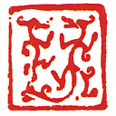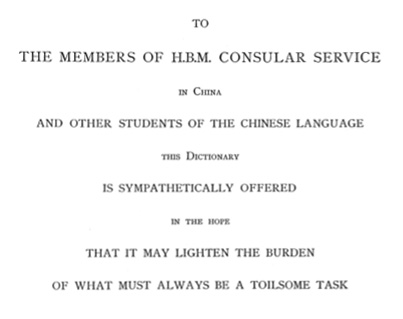Chinese for Reading
Introduction
[This is an excerpt from the first draft. Not for citation.]
I've begun learning Chinese three times in my life. I first began when I was 19 years old, an undergraduate preparing for a semester abroad. I mainly learned to speak -- my listening comprehension and reading skills were far behind my limited ability to speak.
The next time I began learning Chinese was at age 32, when I entered graduate school -- there, the focus was on listening comprehension. Most of my classmates were Chinese native speakers who understood English perfectly, so speaking was no longer critical. Problems I might have while reading could be resolved by asking a friend for help. Instead, understanding what was being said around me in China was the most important thing. I can't say I ever acheived real proficiency outside of certain familiar contexts, but the effort taught me one thing that has stayed with me ever since: you can't read Chinese with any semblance of fluency without being able to hear the language as you read.
Another experience in graduate school that stands out for me was preparing for my French exam. Since I had already completed proficiency exams in Chinese and Japanese, the last thing I wanted to do was learn a European language. I was rescued by a book called French for Reading, the premise of which was simple -- if you know English, you already possess a large proportion of the knowledge required to read French. Now, obviously, going from English to Chinese is not the same, but here's the thing -- if you can pronounce Chinese words when you see them and identify their grammatical place in a sentence, you are halfway home. Unfortunately, the third and most important leg of the French for Reading stool, the fact that English and French are closely-related languages with many words in common, is not an option with Chinese. However, Chinese has a different set of advantages when it comes to reading -- its grammatical structure and its peculiar writing system. For millenia, people hailing from disparate regions of China, with native languages as different as French and English (not to mention other European languages), have adopted a unified writing system. How and why that is possible is what makes Chinese for Reading possible.
This brings us to the third time I began learning Chinese, at age 50. I was 40 when I finished graduate school, but I never turned in my dissertation. Soon, a decade had passed without progress. By then, I knew that in order to complete my degree and produce a series of books and articles I wanted to write, I would have to learn Chinese once again. This time, the focus was on reading, since I was working largely on my own, in both contemporary and literary Chinese, without easy access to my former teachers and classmates, who were by this time all far away and busy with their families and professional careers.
In facing this task, the single most challenging aspect was rebuilding my vocabulary. Grammar and its function words are easy enough. Even if you have long since forgotten how a particular structure functions, the genius of Chinese grammar makes it possible to get back on that bicycle. Vocabulary, however, is another story. By this I mean the interchangeable parts of a sentence structure -- the nouns, verbs, adverbs, adjectives. Many of these words are composed of bound forms, the most difficult type of hànzi to remember. [...]
On Chinese-English dictionaries
[Again, this is a draft. Not for citation.]
In the introduction, I mentioned that Chinese grammar and its "peculiar writing system" would help make up for the fact that there are few linguistic parallels between English and Chinese words, unlike those between English and French that make French for Reading so effective. Traditional Chinese dictionaries were indexed by their primary graphic components (usually called "radicals" -- a term I avoid elsewhere) -- this is an excellent way to index hànzi, but it is a terrible way to order linguistic information in one's mind. Anyone old enough to remember the experience of countless hours spent looking up hànzi by their radicals while reading can attest to this. It was also something understood by the authors of the earliest Chinese-English dictionaries written for students of Chinese, as opposed to those written for Chinese students of English. Giles 1892 and 1912, Soothill 1899, Fenn 1926, and Mathews 1931 were all ordered by sound. Giles is the first Chinese-English dictionary to both accurately represent the sounds of Chinese and adapt Legge for clarity with regard to its definitions, thereby producing what we may call the first "modern" Chinese-English dictionary. [The text of his dedication page is shown above.] Soothill was especially industrious, ordering his "Four Thousand" dictionary for students by phonetic components, followed by a larger dictionary (around ten thousand hànzi, same as Giles) organized by sound.
Soothill found a total of 895 "necessary" phonetics (see the table in Fenn), leading him to the following commentary:
"A thousand characters (Radicals and Phonetics included) seems a rather large "Alphabet," but it is much more than an alphabet, for all but 150 or so have a wide intrinsic value, and of the 150 seemingly useless ones the majority combine to form the commonest words in the language. Hence no time will be wasted in learning them. On the contrary, a persevering study of the radicals and phonetics will in the long run save, not waste, the student's time. ... This may not be as attractive as the usual haphazard way, but it is scientific and gives the best results."
Soothill's reference to science was no mere gesture. The same year (1872) Legge completed the fifth and final volume of the translations of the Chinese classics that inspired Giles to begin his dictionary (begun 1874, completed 1892, revised 1912), the scientific and mathematical foundations of what would later become information theory were being laid in the study of thermodynamics [Maxwell 1866, Boltzmann 1872]. It is the information age that makes the electronic ABC dictionary possible, not to mention the input methods and search technologies that power Wenlin, plus the Internet itself, where you're reading this.
The order followed herein is a departure from Soothill's system as well as from the recent work of Harbaugh (1998) in his computer-based "genealogy" [字譜] of Chinese characters, one of the first successful efforts to use the information technologies available today to advance Chinese-English dictionaries for the learner of Chinese. I am indebted to both efforts, 99 years apart. Nonetheless, one thing they have in common is a problem that Soothill pointed out in 1899:
"The grouping herein is of necessity somewhat arbitrary; ... In each Section will be found phonetics which might have appeared in some other part of the book, but they are placed in their present position through some resemblance to a preceeding or succeeding 字, and each Section is arranged as far as possible to take the line of least resistance."
Much the same can be said of Harbaugh's organization -- both are ultimately focused on 字.
My own efforts began as an attempt to overcome this problem, with thoughts of cross-listing 字 under both graphic elements and phonetic components. The end result would require a three-dimensional model, maybe something like a double or triple helix. However, since my real-life goal was to read fluently, I was more interested in the dynamics of 詞. A model of the various intersections among 字 is an end result of our "toilsome task" (quoting Giles, above), not a starting point. [...]

